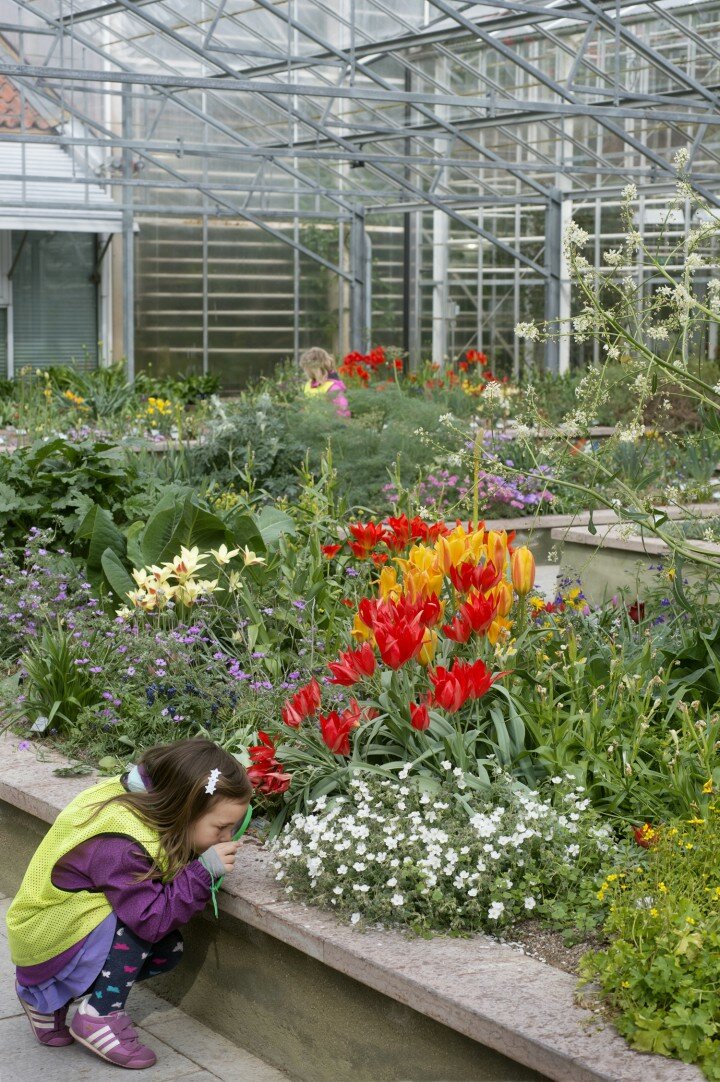What is a botanical garden?
Gothenburg Botanical Garden is one of the parks participating in Gothenburg Green World and is showing off its most beautiful side this year. But maybe you are wondering what we do the rest of the time. In other words, what is a botanical garden?
The thing that sets a botanical garden apart from an ordinary park is that it aims to promote and carry out research, training, the collection of valuable new plants, horticultural development, nature conservation and information activities aimed at the authorities and general public.

In a botanical garden, every plant has a nameplate with its pedigree.
The nature conservation activities of a botanical garden include acting as a gene bank, i.e. a living collection of wild plant species, specimens and cultivars, with the aim of preserving biodiversity.
The term biodiversity is defined by the UN as: the variability among living organisms from all sources … this includes diversity within species, between species and of ecosystems.
We depend on biodiversity and ecological processes such as photosynthesis in green plants and plant pollination to provide us with food, clean water and clean air. Experts estimate that humans are depleting biodiversity 1,000 times faster than the natural rate.
Diversity in the plant world
Plants are vital to life on Earth. So far, around 300,000 species of plants have been catalogued, but we are still discovering many new species. Researchers at Gothenburg Botanical Garden study the characteristics, family relationships and development of various species.
Green plants are the foundation of biodiversity on Earth. Plants have the unique ability to create their own food by capturing energy from the sun. They produce the oxygen we breathe. They absorb carbon dioxide from the atmosphere, and by doing so they help to regulate the climate. We humans use them for food, fuel, building materials and pharmaceuticals. They are also very Beautiful!

In the Bulb garden there are valuable wild collected bulbs.
Plants have adapted in many ways so that they can survive in different environments. In the desert there are cactuses that can withstand intense sun and months without rain, by storing water in their thick stems. In areas with poor soil there are carnivorous plants that capture insects in their traps. The water lily has evolved to grow in water.

Botanical research is about describing this incredible variety. We study the variations in appearance, characteristics and development of species. Who is related to whom? Researchers also study which plants grow where, and why just there.
Gathering knowledge about the diversity of the plant world is invaluable. It is vital to help us work out which species are endangered, how we can save them and to learn how we can use plants in a sustainable way.

Rescue and preserve
Around 300,000 of the plants on Earth have already been catalogued and named, but scientists believe there are over 400,000 species in total. It is estimated that around one-fifth of them are endangered. Staff at Gothenburg Botanical Garden have the knowledge and experience to cultivate plants, and can conserve plants that are endangered.

Mountain Poppy (Papaver radicatum) is very rare and cultivated in Klippträdgården’s Scandinavian department.
According to the UN Convention on Biological Diversity, plants should naturally be protected in their natural habitat, through protection by law and the creation of nature reserves. But endangered species should also be conserved in other locations, outside their original habitat. This reduces the risk of extinction and offers the possibility of replanting if needed. It also gives researchers the opportunity to study how the plants are affected by growing under different conditions.
Growing plants outside their natural habitats presents many challenges. Many endangered species are endangered precisely because they require very specific conditions in order to thrive. Staff at Gothenburg Botanical Garden have long experience in getting seeds to germinate and plants to thrive despite differences in climate, hours of sunshine, soil conditions and environment in comparison with their natural habitat.

Cleanup with seeds
A Global Strategy for Plant Conservation has been developed in collaboration between the world’s leading botanical gardens, and this is now an important part of the UN Convention on Biological Diversity. One of the goals of the strategy is that at least 75 per cent of endangered plant species should be conserved outside their natural habitat. The efforts of Gothenburg Botanical Garden to cultivate endangered species thus play an important part in achieving this goal.
Read more about our work at botaniska.se/forskning (link in Swedish)
